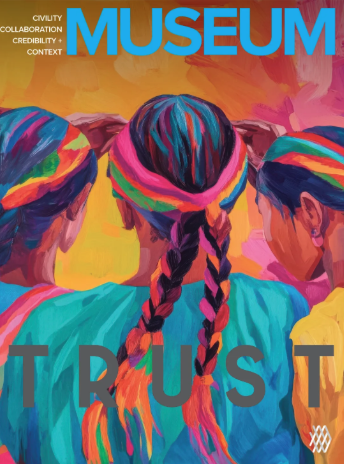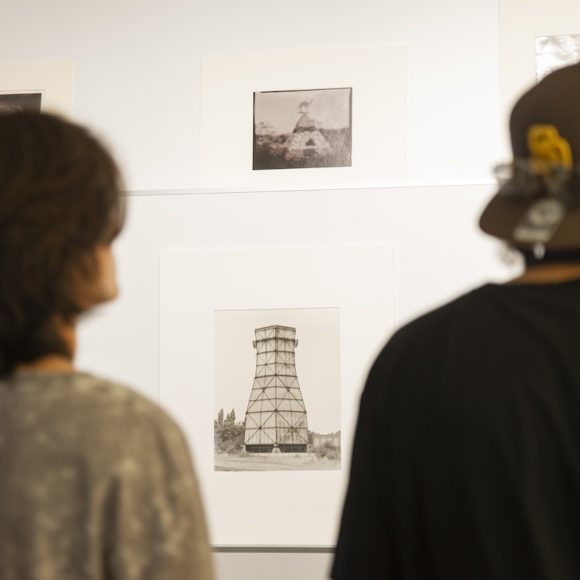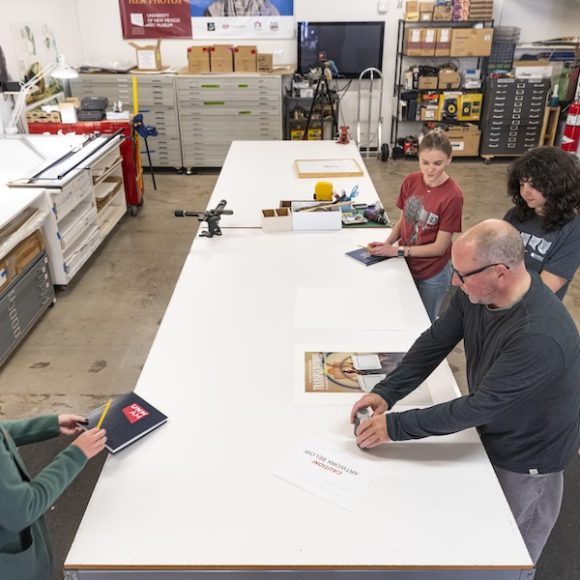Collections Year
Museum is a Verb.
We believe that a museum is not simply a place. It’s something we do.
This is the spirit behind Collections Year, where we’re focused on caring for and making improvements to our collections.
We’ll use the time to actively engage with our collections. We’ll collaborate with students. We’ll create digital access for our visitors. We’ll continue to reimagine what an academic art museum can be.
We’re excited to get to work. Follow along with us.
• For more details, browse Collections Year FAQs.
• Read the Collections Year announcement.
Collections Year Timeline
- Collections Year kicks off: May 19
- Students selected as Collections Apprentices: 10
- Staff attending Art Handling training: 9
- Works inventoried in one targeted collection: 300+
- Inventory and Condition Report staff trainings: 1
- Print Vault Procedures and Handling Works on Paper staff trainings: 1
- Collection moved to offsite storage: 1
- Timeline established to receive major gift: 1
- Archive inventory in progress: 1
- Print vault inventory in progress: 1
What is…?
A Guide to the Complexities of Collections Care
Accessioning is the formal act of legally accepting an object or objects to the museum’s permanent collection. Because it commits staff time, space and other resources to the proper care of this material, notes the American Alliance of Museums, it is important that acquiring material for the collections be done in a thoughtful, inclusive way that reflects the best interests of the museum and its audiences, and can be sustained by the available resources.
A condition report is a vital tool in caring for objects in a museum collection. It provides a detailed account of an object’s current state, including any signs of damage, wear or change over time. A condition report usually includes both written observations and photographs and may also note how the object was made, how it’s been used or displayed, and whether it has received any previous repairs or treatments.
Condition reports help museum collections staff determine if an item can safely be exhibited or loaned, or if it needs conservation. Such a report also serves as a foundation for any conservation treatment. Conservators use the information to design treatment plans that meet the object’s specific needs. After any work is done, the report is updated to record exactly what was done and any outcomes. This creates a long-term record that supports future care and interpretation.
According to the American Alliance of Museums, museum documentation involves the gathering and use of information about objects in a museum collection. Cataloging is the process of recording detailed information about individual items or groups of related items.
The National Park Service’s (NPS) Museum Handbook has cataloging guidelines for describing objects and their condition, measuring and weighing objects, and cataloging pairs and parts of a set.
Why do museums talk about stewardship? Because stewardship is behind most decisions and activities related to museum collections.
The American Alliance of Museums details collections stewardship standards as follows:
Stewardship is the careful, sound and responsible management of that which is entrusted to a museum’s care. Possession of collections incurs legal, social and ethical obligations to provide proper physical storage, management and care for the collections and associated documentation, as well as proper intellectual control.
Collections are held in trust for the public and made accessible for the public’s benefit. Effective collections stewardship ensures that the objects the museum owns, borrows, holds in its custody and/or uses are available and accessible to present and future generations. A museum’s collections are an important means of advancing its mission and serving the public.
Core Standards: Collections Stewardship
- The museum owns, exhibits or uses collections that are appropriate to its mission.
- The museum legally, ethically and effectively manages, documents, cares for and uses the collections.
- The museum conducts collections-related research according to appropriate scholarly standards.
- The museum strategically plans for the use and development of its collections.
- Guided by its mission, the museum provides public access to its collections while ensuring their preservation.
A vault is a secure, specialized long-term storage space for museum objects when they are not on exhibition. Vaults are climate-controlled spaces designed to protect artworks from negative environmental impacts and theft. They minimize damage to artworks so that objects are safe, preserved and available for future generations.




